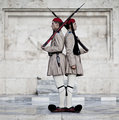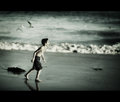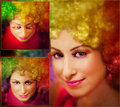| Author | Thread |
|
|
12/02/2010 07:57:14 AM · #1 |
I grabbed myself a 50mm f1.8 for taking low light indoor candids without a flash. I'm having a problem keeping the images sharp. i usually shoot in aperture priority mode and set all the way down to 1.8, but i still get blurry photos.
I also tried shooting in Tv and let the camera pick an aperture, but then they come out pretty dark.
Is this common? even shooting at iso 1600, do i need a camera with higher iso ability? or do i just take the sharper dark photos and try to lighten them up in post processing? |
|
|
|
12/02/2010 08:12:07 AM · #2 |
If you are used to image stabilized lenses, then it will certainly be a change to shoot comfortably with a non-IS lens like the 50 1.8. When I first got mine, I could get anything sharp under 1/80 of a second shutter speed. After practicing, I can now get sharp photos with it at 1/20s, if I'm careful (handheld of course).
Also, that lens at 1.8 has always shown to be a bit soft to me. I always try to shoot it at 2.0 or higher if I can, and only use 1.8 if really really needed. |
|
|
|
12/02/2010 01:00:54 PM · #3 |
Originally posted by mike_311:
I grabbed myself a 50mm f1.8 for taking low light indoor candids without a flash. I'm having a problem keeping the images sharp. i usually shoot in aperture priority mode and set all the way down to 1.8, but i still get blurry photos.
I also tried shooting in Tv and let the camera pick an aperture, but then they come out pretty dark.
Is this common? even shooting at iso 1600, do i need a camera with higher iso ability? or do i just take the sharper dark photos and try to lighten them up in post processing? |
1.8 is an extremely shallow depth of field, so parts will be oof
|
|
|
|
12/02/2010 01:26:08 PM · #4 |
I always try to follow this rule of thumb when doing handheld shots:
Shoot at a shutter speed faster than the inverse of the desired focal length.
So, 50mm is 1/50 sec.
Or 1/80 sec, because of the conversion of 50mm to 80mm with the crop factor of 1.6.
But as giantmike said, with practice, you can use a slower speed. |
|
|
|
12/02/2010 01:52:58 PM · #5 |
Originally posted by tholmir:
I always try to follow this rule of thumb when doing handheld shots:
Shoot at a shutter speed faster than the inverse of the desired focal length.
So, 50mm is 1/50 sec.
Or 1/80 sec, because of the conversion of 50mm to 80mm with the crop factor of 1.6.
But as giantmike said, with practice, you can use a slower speed. |
i forgot about the crop factor, i was trying to stay over 1/50.
But even still how do yo guys deal with dark photos? |
|
|
|
12/02/2010 02:02:53 PM · #6 |
| There comes a point where there will just not be enough light. You can push the exposure in processing, but you will have to deal with noise at ISO 1600 and your body. |
|
|
|
12/02/2010 03:33:02 PM · #7 |
| In some indoor lighting scenarios, even f/1.8 is inadequate. Moving to an f/1.4 lens will give you double the shutter speed, but even narrower DoF. At some point there is a diminishing return. Using a wider, faster lens, e.g. 35/1.4, can be a partial solution, since you don't need quite as fast a shutter speed to avoid shake, and since the DoF will bbe greater with the smaller focal length. For live subjects, movement will require 1/50s or greater anyhow, so the benefit in shutter speed is dubious, and the cost of a wide, fast lens is nothing to sneeze at. Using a lens equipped with IS is also of little use; sure, you can shoot at slower shutter speed, but you'll still have blurred people. IS does nothing for subject motion. |
|
|
|
12/02/2010 04:30:50 PM · #8 |
Some good answers so far.
I don't have the 50mm f/1.8, but speaking of shallow depth of field, I shoot with my Canon EF 85mm f/1.2L II USM all the time and it does usually take some time to get used to it. A few of my shots on DPC are shot with with the 85mm @ f/1.2 and they are quite sharp. Here they are:
    
Keep in mind that once you press the shutter half way, the camera locks in which means the plane of focus gets set (which is very shallow in this case of course), after this happens, if you are too close to your subject, you or your subject better not be moving towards or away from each other because if you do, your subject will fall outside the plane of focus, therefore he/she will become blurry. You can totally get away with subjects that are moving towards or away from you, if you are not standing too close to them, because the farther you are from them, the deeper the depth of field will be, hence more room to to move in or out.
In my "Ritratti Colorti" shot, I was as close to my subject as I possibly could while the lens auto-focus was still functional. I had to absolutely maintain my distance to my subject as fixed as I possibly could after I pressed the shutter half way and it worked (eye closest to the camera was the point of focus).
I now try to avoid using the f/1.2 when I am super close to my subjects because the DOF becomes so very delicate and a lot of times I end up with a few blurry pictures, but never a problem when I am more than 30 feet away from them.
Also, there are times indoors that I need all of the f/1.2 in order to maintain a fast shutter speed while my ISO stays at or under 1600. My Ritratti Colorti shots were all at f/1.2 and ISO 1600 with the shutter speeds all being faster than 1/160 sec.
I would start shooting subjects that are far away from you at f/1.8 (since that is what your lowest f number is) and if they are still blurry, I would have the lens checked out, but I doubt that is the case.
Hope this helps a little.
-Allen
Message edited by author 2010-12-02 17:27:03. |
|
|
|
12/02/2010 05:04:24 PM · #9 |
Originally posted by kirbic:
In some indoor lighting scenarios, even f/1.8 is inadequate. Moving to an f/1.4 lens will give you double the shutter speed, but even narrower DoF. At some point there is a diminishing return. Using a wider, faster lens, e.g. 35/1.4, can be a partial solution, since you don't need quite as fast a shutter speed to avoid shake, and since the DoF will bbe greater with the smaller focal length. For live subjects, movement will require 1/50s or greater anyhow, so the benefit in shutter speed is dubious, and the cost of a wide, fast lens is nothing to sneeze at. Using a lens equipped with IS is also of little use; sure, you can shoot at slower shutter speed, but you'll still have blurred people. IS does nothing for subject motion. |
ooh ooh, when do we ever get to correct Fritz on a technical detail? The difference between f/1.4 and f/1.8 is 2/3rds of a stop and not a full stop so you would not get a doubling of shutter speed.
Watch me be wrong here... |
|
|
|
12/02/2010 07:06:16 PM · #10 |
Originally posted by DrAchoo:
Originally posted by kirbic:
In some indoor lighting scenarios, even f/1.8 is inadequate. Moving to an f/1.4 lens will give you double the shutter speed, but even narrower DoF. At some point there is a diminishing return. Using a wider, faster lens, e.g. 35/1.4, can be a partial solution, since you don't need quite as fast a shutter speed to avoid shake, and since the DoF will bbe greater with the smaller focal length. For live subjects, movement will require 1/50s or greater anyhow, so the benefit in shutter speed is dubious, and the cost of a wide, fast lens is nothing to sneeze at. Using a lens equipped with IS is also of little use; sure, you can shoot at slower shutter speed, but you'll still have blurred people. IS does nothing for subject motion. |
ooh ooh, when do we ever get to correct Fritz on a technical detail? The difference between f/1.4 and f/1.8 is 2/3rds of a stop and not a full stop so you would not get a doubling of shutter speed.
Watch me be wrong here... |
D'oh!
Ya got me on that one! :-) |
|
|
|
12/21/2010 10:12:23 AM · #11 |
I see several possible reasons for blurry pictures:
Motion blur - 1/50 secs with 50mm lenses is critical. Try using tripod - just to find out, if this help. Or (if you have no tripod) place the camera on the table and use self-timer. The solution for motion blur is to use shorter time or tripod.
Lens blur - the lenses you use are usually "softer" by 1,8 - it means, that at the full aperture the picture is blurred. Solution is to use higher aperture (smaller hole). Longer time or higher ISO are the costs.
And finally - nobodys perfect. The camera itself can have a problem to focus in low light situation. Solution is to light the scene - then focus - switch the lights off - and take a picture. It is very cumbersome, though. Alternative is to use flash with infrared focus assistant. When you press the trigger halfway, it lights the object to hlep camera body to focus. The flash itself you can turn down or cover (if you dont want the flash light). |
|
|
|
12/21/2010 11:03:20 AM · #12 |
Originally posted by mike_311:
but i still get blurry photos.
|
Define blurry.
Are we talking out of focus blurry? Or, are we looking at motion blur blurry?
Posting a sample with EXIF would definitely help this discussion.
|
|
Home -
Challenges -
Community -
League -
Photos -
Cameras -
Lenses -
Learn -
Help -
Terms of Use -
Privacy -
Top ^
DPChallenge, and website content and design, Copyright © 2001-2026 Challenging Technologies, LLC.
All digital photo copyrights belong to the photographers and may not be used without permission.
Current Server Time: 01/07/2026 04:59:15 AM EST.

